I was feeling pretty good yesterday as my remediation work went according to plan. Here’s four photos that show the transition from flaking lead-based paint, through surface prep, priming, and a first coat of paint.
Still needs a second coat. I’m pretty sure I did this safely, with no contamination — no lead dust in our house. The lead-based paint is still there, of course, but it’s pretty well sealed and shouldn’t bother us for years. Kids under the age of six are at the most risk of lead poisoning, and since we are living in the house right now, I’m definitely looking for quick solutions that will be effective for a number of years.
So far so good. But…
While I was taking a break and waiting for things to dry, I did some more lead-testing around the house using some LeadCheck Swabs. I found a couple more things ACORN missed.
We’ve got a bunch of window screens lying around in old wooden frames which are covered in dark green paint. These were removed from the house during our post-flood renovation and ACORN’s remediation work and have never been replaced. Some were even painted yellow by the ACORN volunteers, rather haphazardly. Yet somehow ACORN never identified that dark green paint as being lead-based — which I believe it is, based on my testing yesterday.
Not all of the screens are peeling like the ones pictured. Most are in halfway decent shape. I’m inclined to just get rid of them all, but I wonder if it would be feasible — and cost-effective — to have them dipped and stripped.
Next stop: the bathroom.
The painted woodwork in this room was sanded down by the previous owner. If you look closely you can see patches of white paint which remain. Sure enough, it’s lead-based. It’s not just this door, it’s all over the room on the trim, and the window too.
ACORN didn’t catch this, though they did identify and address the lead paint on the bathroom wall. (Thankfully this seems to be the only room inside the house with lead-based paint.) I’m guessing the wall and woodwork were painted at the same time with the same paint. I can see why they missed the woodwork, as it doesn’t even appear to be painted at first glance.
I’m not sure how seriously to take this hazard. Sometimes you’re better off not disturbing paint. As long as it remains intact with no flaking or peeling or dust it can’t get into your system. But what about this sanded-down stuff? I think it needs to be addressed. Probably a simple matter of painting over it. Too bad, because I like the look of the wood.
Oh, and then there’s the other side of the door:
The previous owner didn’t sand the inside, and it’s cracking and peeling, so addressing this is a priority. Probably a good candidate for a dip and strip.
I suppose I need to have a closer look at the inside of the closet itself… Hmm… and the medicine cabinet too, which is made from the same wood and has what I assume is the same paint in the interior. And the window with its moving parts could be a source of lead dust.
We’re thinking of getting the tub reglazed. It will be out for three weeks, which will be an excellent time to renovate the bathroom, which frankly needs some work. But the more I think about it, the more I’m thinking we might need a specialist for this room.
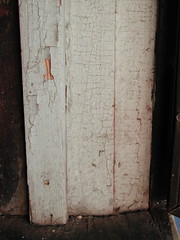
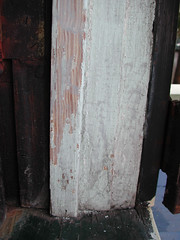
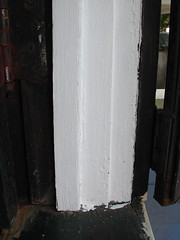
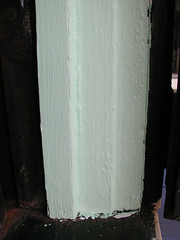
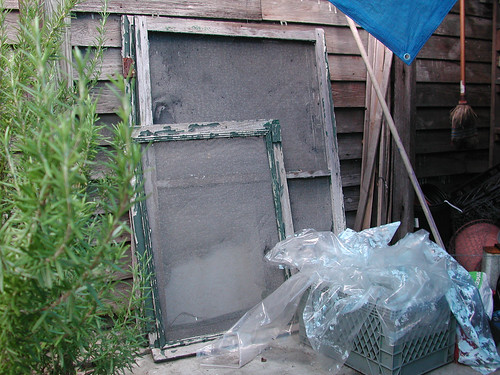


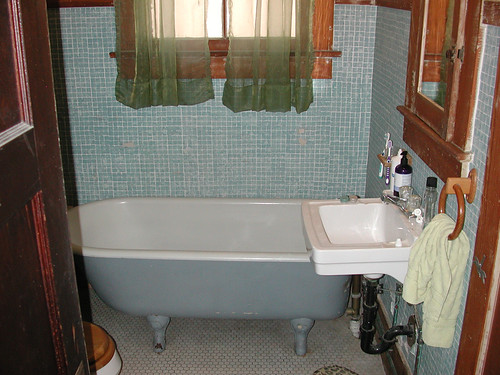
Is “specialist” a euphemism for “real estate agent”?
No euphemism. We’ll need to address these issues if we want to sell the house.
[…] the past three months we’ve taken several steps. I remediated the doorjamb. We stopped bathing the girl in our old clawfoot tub; in fact, we’ve stopped […]